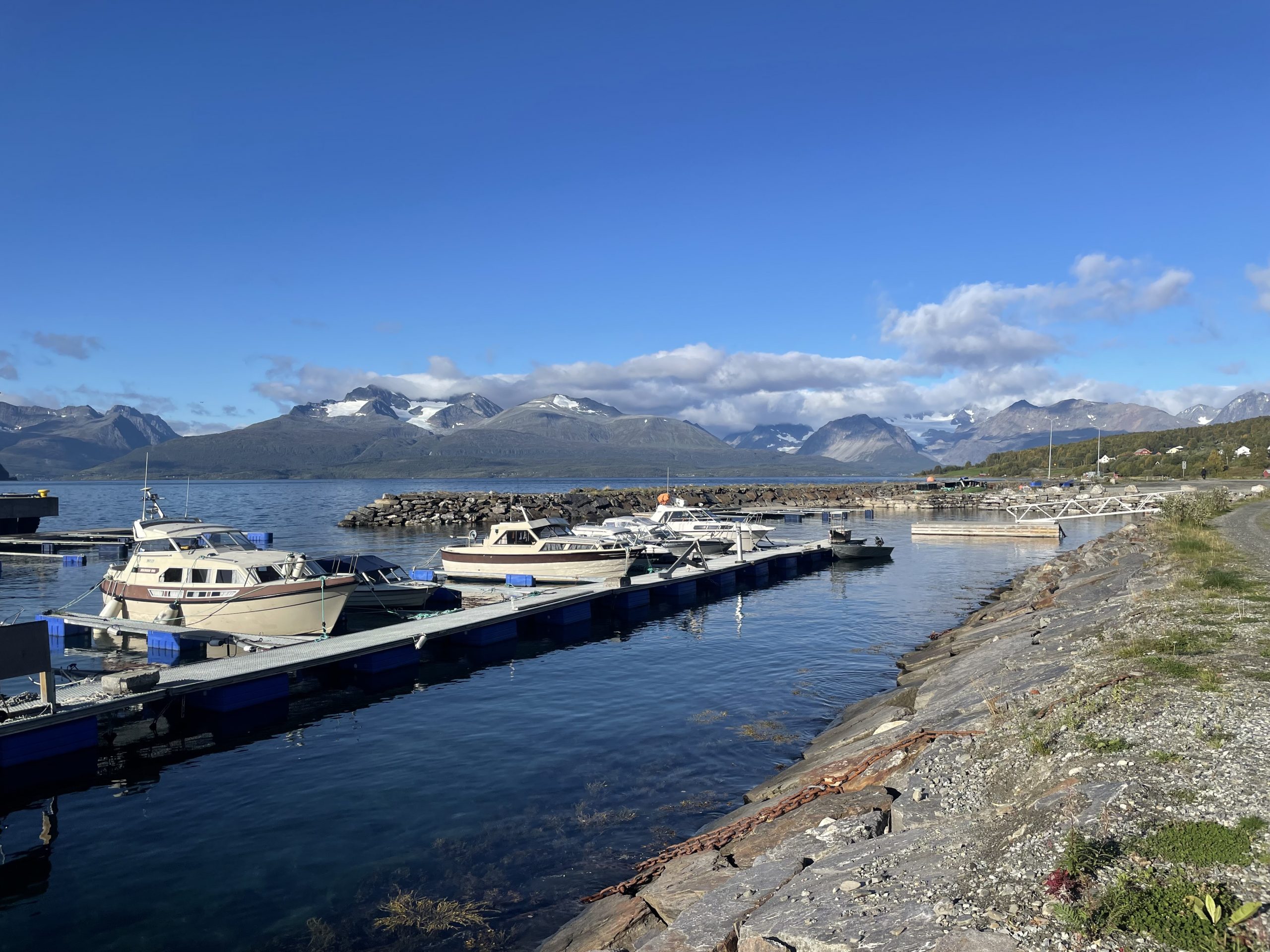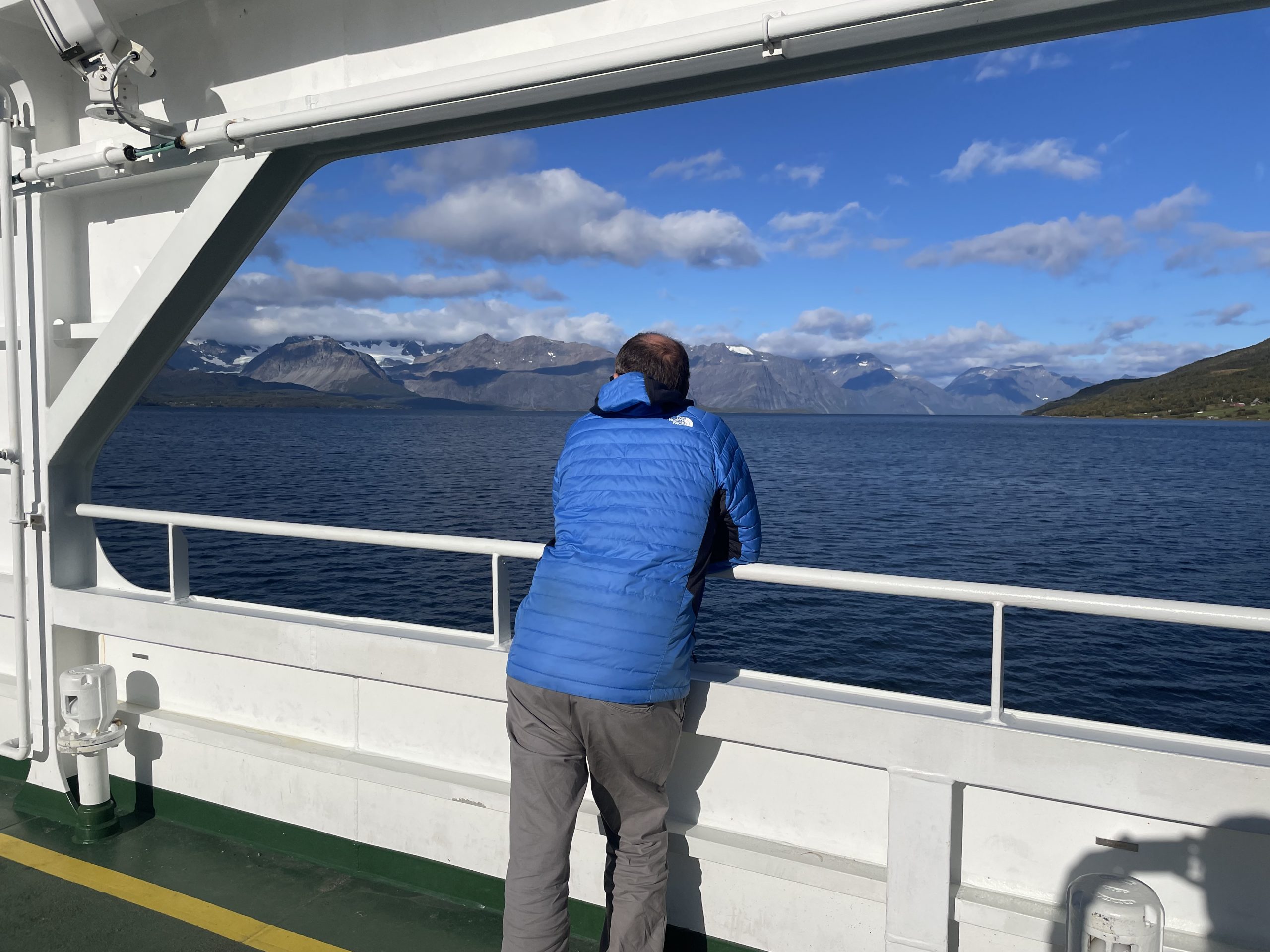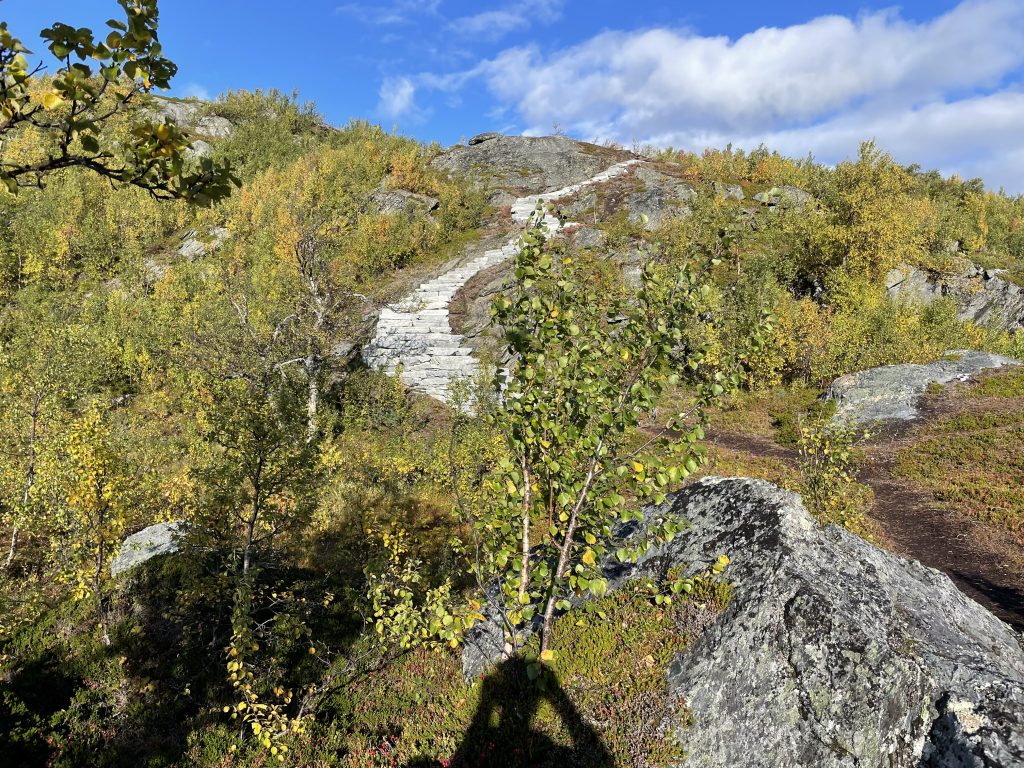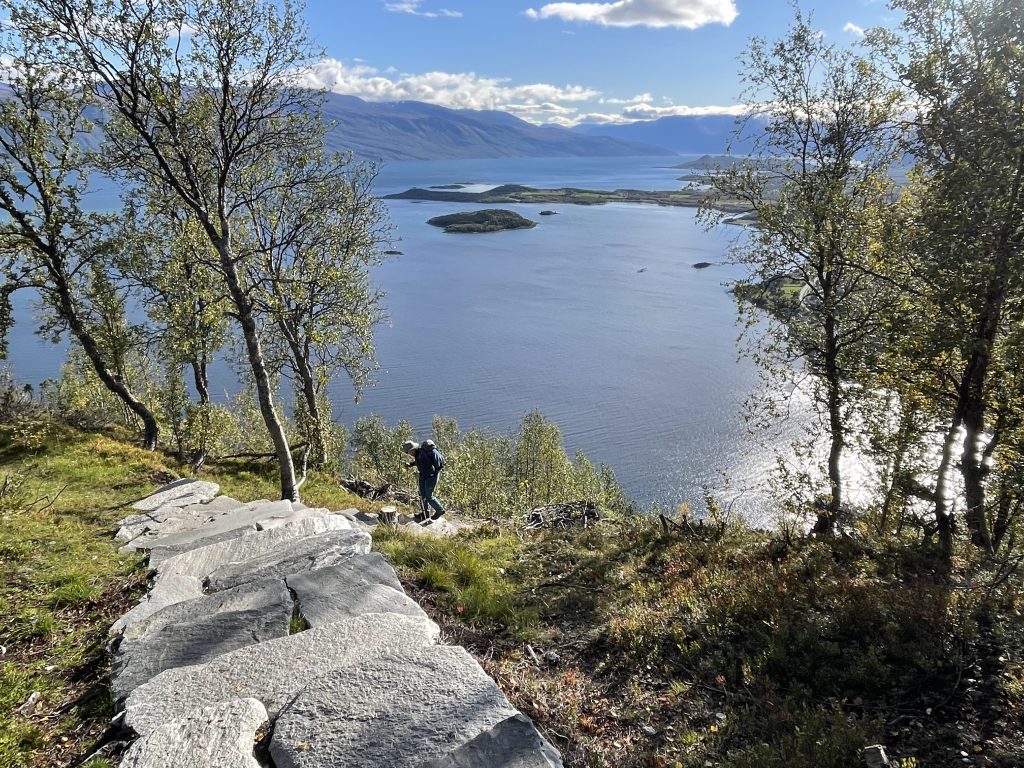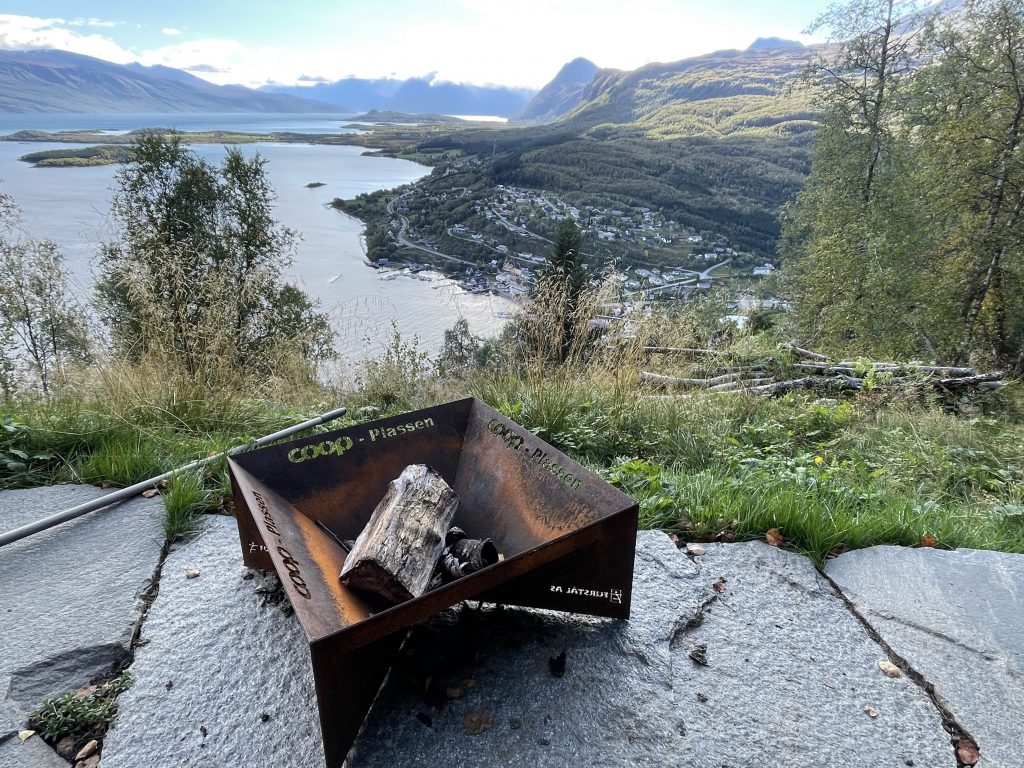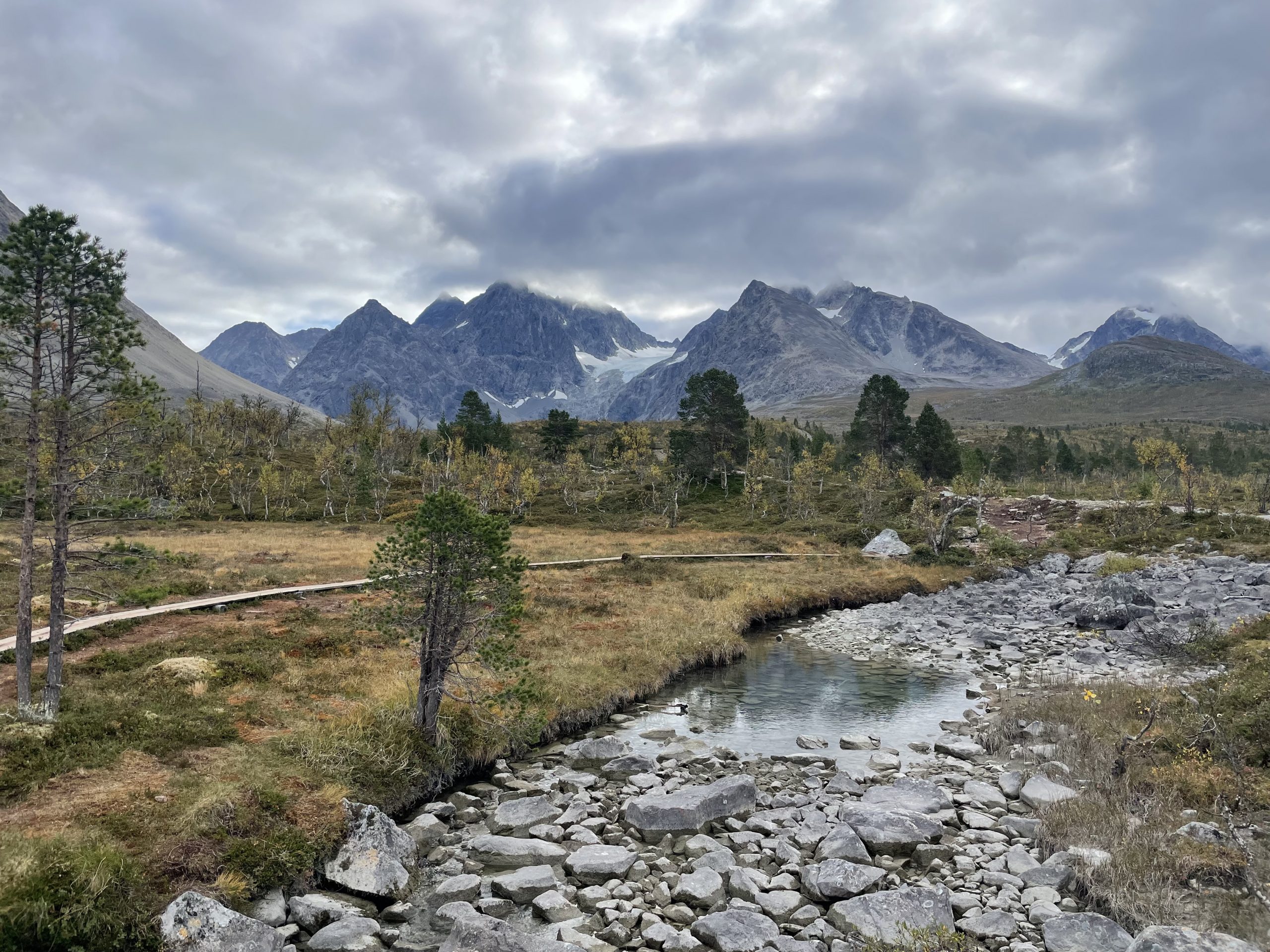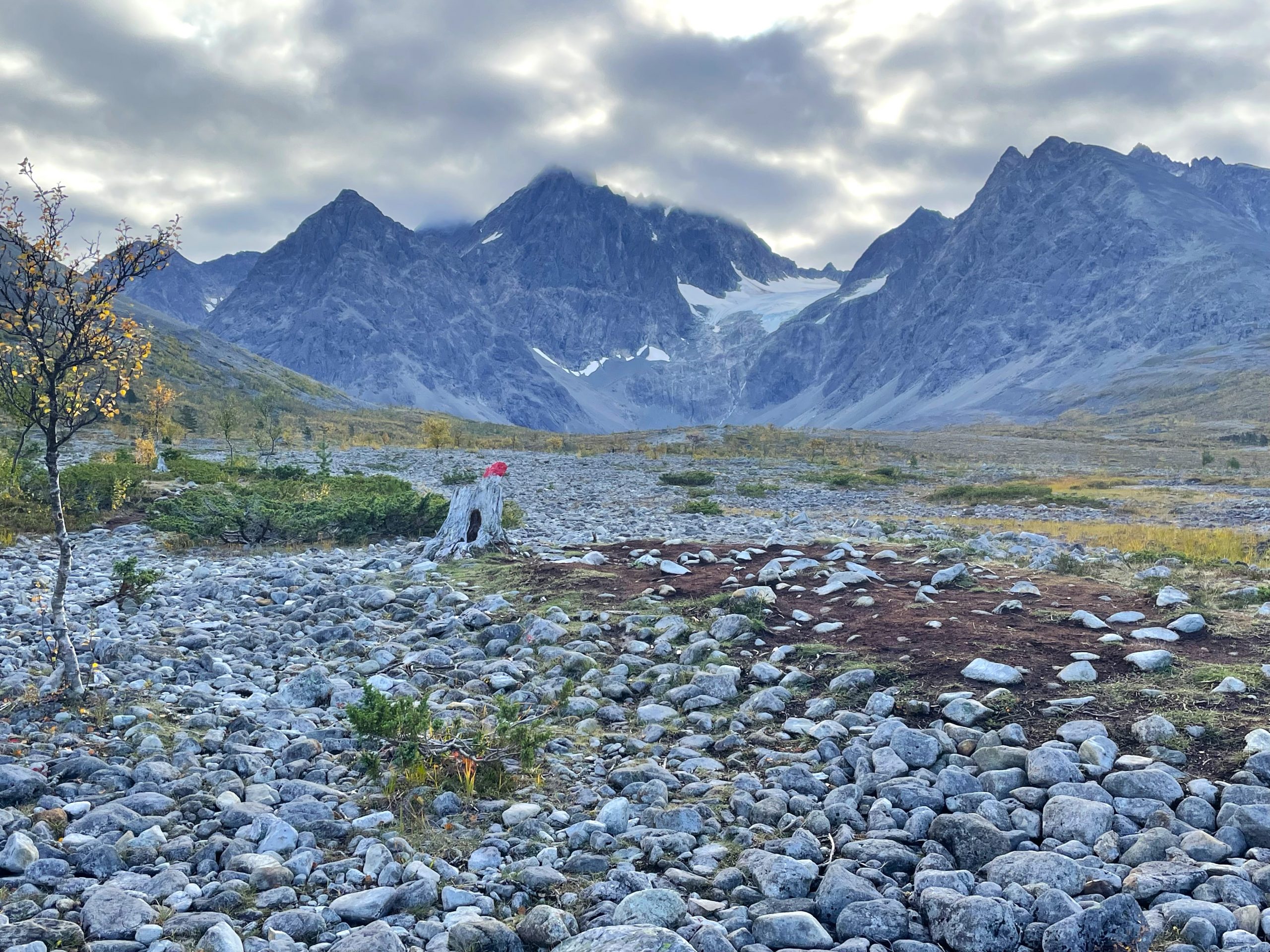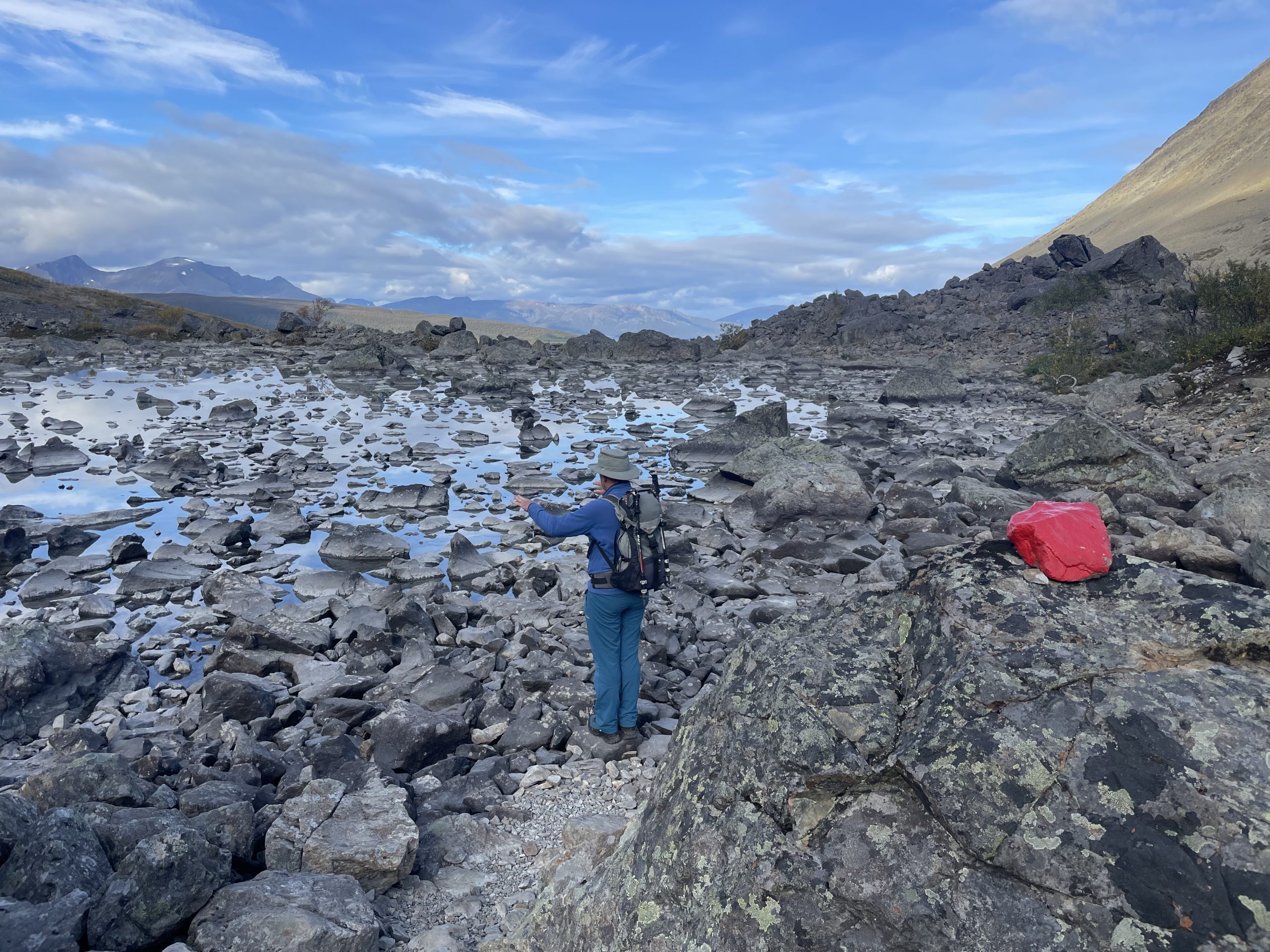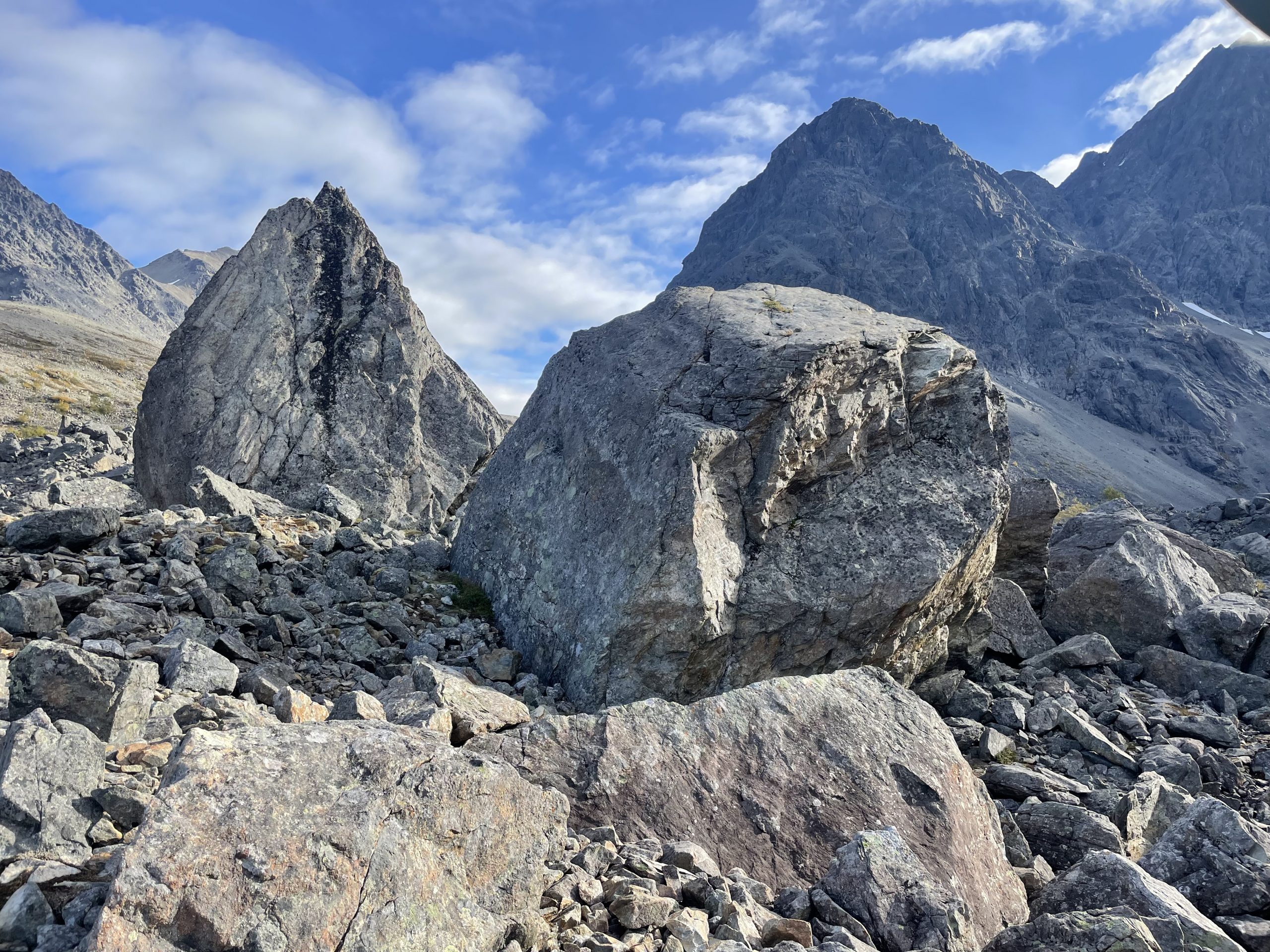19/09/2025
It was finally time to take the ferry across the Lyngenfjord. We’d gazed at the dramatic views of the Lyngen Alps a few times and now it was time to set foot on them.
We parked in the queue at the Olderdalen terminal with a couple of hours before the next crossing. Paul immediately grabbed his fishing rod, joined after a few minutes, by the Finnish man from the car in front of us. I went to buy ice-creams from the cafe to enjoy in the sunshine.
- Waiting for the ferry
- Approaching the Lyngen Alps
Every ferry crossing is a little adventure in it’s own right as we anticipate what we’ll find on the other side. On this trip we were looking forward to some walks in these spectacular mountains. There are some long and challenging hikes on this peninsular, many taking multiple days and requiring stays at mountain huts. A significant number of the peaks are the preserve of mountaineers, without marked paths and requiring ropes and glacier crossing skills. That still leaves quite a few day hikes to choose from. We narrowed it down to a couple of short but interesting looking walks.
Sherpa Steps
On arrival in Lyngseidet we made our way immediately to a small parking area on the side of the road. After having a quick lunch we crossed the road to climb the Lyngentrappa. This is one of a number of ‘Sherpa Steps’ that can be found in Norway. The stone staircases have been built by craftspeople from Nepal who have been recruited specifically for their mountain path construction skills. The staircases solve a number of problems for the mountain paths of Norway. They reduce the erosion caused by thousands of tourists who want to experience the natural wonders of the country, they improve access to the extremely steep paths, making them accessible to many more people. This, in turn, reduces the pressure on mountain rescue services in Norway who see high volumes of call outs for unprepared tourists attempting routes that are beyond their capabilities.

Start point for the Sherpa Steps
They do have their detractors. Some purists don’t like the engineered access to the mountain, preferring more ‘natural’ paths. And others have concerns either about the exploitation of foreign workers who are willing to work for lower salaries than locals, or about jobs being taken by foreign workers which could be done by locals.
Our first experience of these steps was nothing but positive. We quickly ascended the path and found the start of the steps which took us swiftly uphill with a helpful count of the number of steps climbed. Rest areas and seats were strategically placed along the route. Some of the seating areas even had firepits available. We could imagine climbing these stairs on a long summer’s evening and sitting around a fire in the twilight with the magical views of the mountains and the sea.
- The stone stairs clearly seen through the vegetation
- Views across the sea
- Firepits on the rest areas
We continued climbing beyond the end of the main staircase, along a path that was occasionally interrupted by steps. We were hoping to get high enough for views over the glaciers but each time we climbed the next ridge we found another in front of us. Eventually we saw some distant glimpses of the snowy patches on the mountains. That was good enough for us to turn around and venture back down, making it a circular walk by taking an alternative path down. There were no Sherpa steps on the way down and erosion was evident even on this less popular path. A sign of how effective they have been.
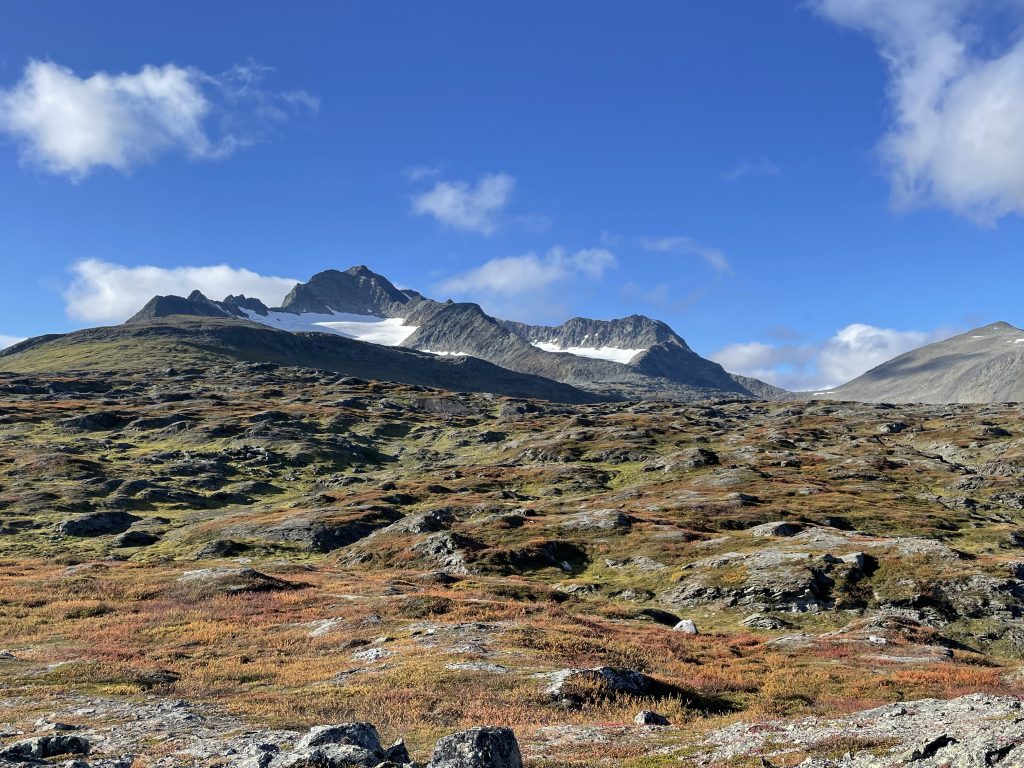
Finally getting views of the glaciers
Parking at Blåisvatnet
We drove from Lyngseidet across the waist of the Lyngen peninsula and followed the coast road north to the large car park for the Blåisvatnet trail.
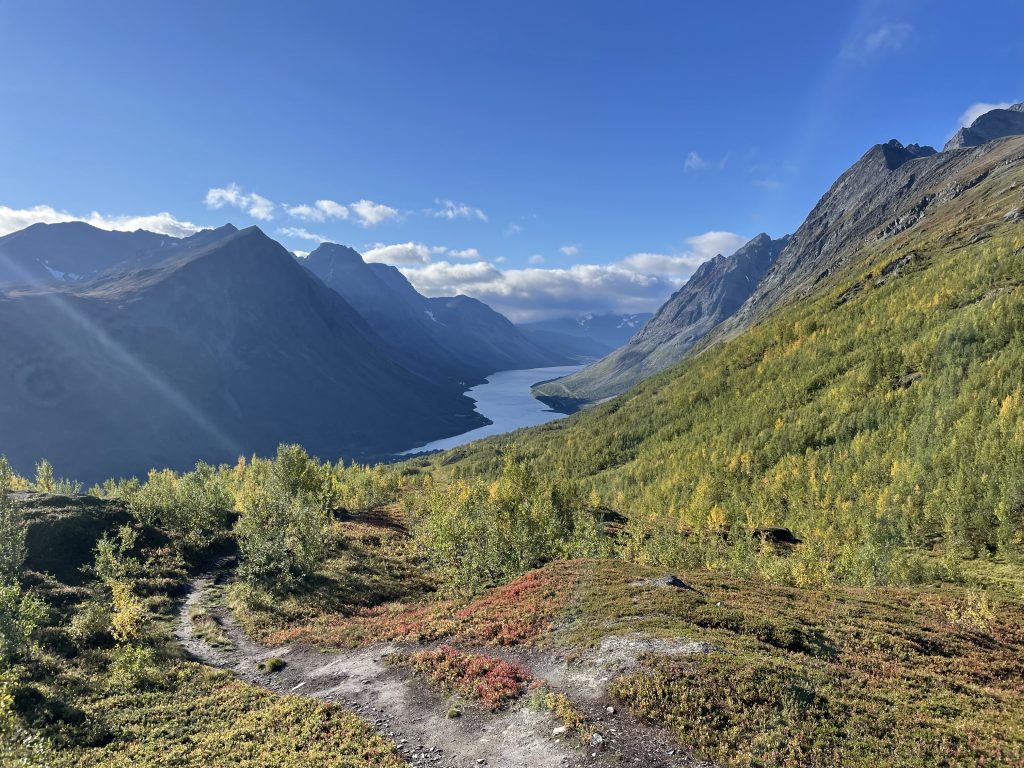
The valley that cuts the Lyngen Alps in two.
On arrival it was obvious that this was a popular area. The large car park was bustling with coaches, motorhomes and cars. More than that, there were cameras on the entrance to the car park and no clear indication of parking costs. A clear sign that there was going to be a steep charge.
We took a look at Park4Night and it looked like the cost was going to be under 300 NOK for an overnight stay, this is not cheap but not unusually expensive for Norway. As we wanted to walk from here we made ourselves comfortable in the car park. We saw several motorhomes drive up and then drive away, obviously put off by the cost.
We had a peaceful evening, shared with a few other vans. A couple of cars were parked up while their occupants ventured off into the mountains. Later an older couple arrived to clean the two toilets. These were just long drop loos, but very clean and not as pungent as some we’d experienced.
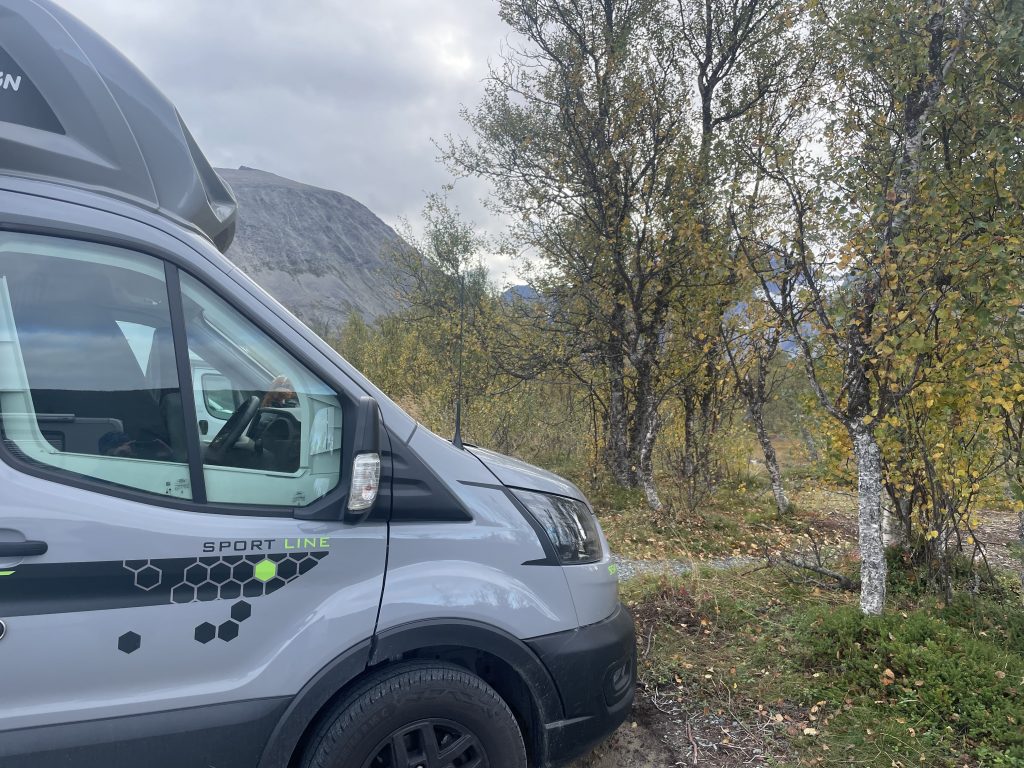
Parked at Blaisvatnet
That night we experienced our 5th aurora. Less dramatic than previous ones it didnt photograph very well with the amount of haze in the atmosphere but was no less exciting.
Walking to the Blue Lake
We got ourselves up and out early the following morning. We’d had our warning when we turned up and saw the busy car park so we knew it would be best to set off before anyone turned up.
The Blue Lake – Blåisvatnet – is a glacial lake at the foot of the Lenangsbreen glacier. We could see the glacier hunkering down in the shaded gap between the mountains as we set out on the walk.
The first part of the walk was through spindly trees and across marshy river banks but very quickly the landscape changed to a rocky moonscape. We crossed rocks and boulders, following the clues that we were on a path; slightly cleaner rocks worn clear of lichen by passing feet and red paint splodges that were much easier to see on the way back than on the outward journey.
- Starting off through trees and across marshes
- The terrain becomes a rocky moonscape
- The river bed
As we got closer to the lake the boulders got bigger until we faced a wall of huge jagged rocks to clamber over. That was when we finally got our view of the lake. The intense blue water with a backdrop of mountains and glacier is a welcome gift after the barren rocky walk.
- The final large rocks to navigate
- Finally, the lake is revealed
We sat and watched the lake as we sipped our morning brews from our flasks. We were amazed to see the flickering shadows of fish swimming in water that looks toxic. The blue is actually just light relfecting from the fine silt suspended in the lake, ground out of the mountains by the glacier.
Unlike other glacial lakes we have seen, we could get right to the edge of this one. The water was stunningly cold, but even so one couple dared to go for a swim. Neither of them stayed in for long but we were impressed by their bravery.
By the time we returned the path was busy with people struggling over the rocks. It’s not a difficult path, it doesn’t climb steeply or require any scrambling, but a good pair of shoes definitely helps.
Our two walks in the Lyngen Alps had given us an incredible taste of these stunning glacier clad mountains. It’s amazing to think that this is just one small corner of Norway’s fantastic landscape.

